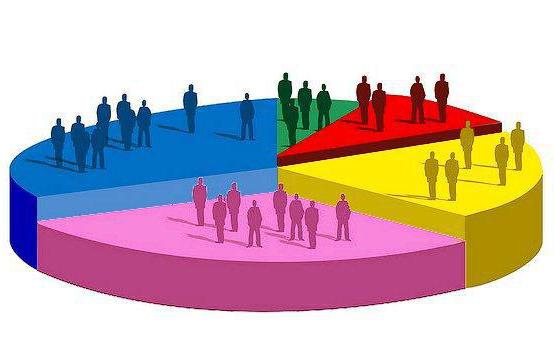Marketing analysis - this is something that no company can do without. Many people find doing business a fairly simple task. You need to produce a product, sell it to those who need it and benefit from it. But in reality, everything is much more complicated, because you need to constantly monitor what is happening in the market, what your consumers want, what requests they make about your product.
If you do not conduct a marketing analysis, you will quickly realize that you are becoming uncompetitive, since other companies that offer similar products do not just launch them on the market, but act much more complicated and smart. The most important thing to say is that they conduct a consumer analysis.
If you want your products to be sold much more efficiently, then you should definitely pay attention to this article, from which you will learn what consumer analysis is, how it is carried out, why it is done, and how to process the results of such analysis. All this will be very useful for you in any business, and the better you understand the essence of marketing analysis, the more success you can achieve.
Consumer analysis
Everyone knows that the activities of any company should be aimed at realizing the interests and requirements of consumers. However, there is one important question: how do you know what a potential client wants? Indeed, even without marketing knowledge, it is impossible to argue that you will be much more successful if you can give people not just what you created, but what they need. That is why you need to conduct a consumer analysis. 
Firstly, you can research the market of competitors to find out how successfully a particular product is being sold, and based on this, draw a conclusion regarding which particular aspects are most suitable for the requirements of consumers. You can also conduct certain surveys that let you know what customers like about your company and what they would like to improve. In the modern world of high technology, doing this is very easy. You can always place the questionnaire on your website or send it to your customers by e-mail. There are numerous other ways to analyze the needs of customers, which you can use depending on the direction of your company.
Now you understand that consumer analysis is that analysis in which you study the preferences of your existing and potential customers, differentiate them and segment them in order to further conduct more targeted activities. And at this point it is worth lingering in more detail. Consumer segmentation is one of the most important steps in any marketing strategy, so it should be considered very carefully. Without segmentation, it is impossible to carry out the analysis described above, and without it you cannot achieve maximum efficiency. So what is it? And why is this segmentation so important?
Market segmentation
Consumer segmentation is the process of identifying specific target groups of customers who are more likely to purchase a product than all other customers. The easiest way to explain this is with the help of the Pareto law, which states that twenty percent of consumers buy eighty percent of a product of a certain type, brand or type.At the same time, the remaining eighty percent of consumers buy only twenty percent of the goods, and in most cases these are single, random or impulsive purchases. 
In accordance with this law, we can conclude that the company needs to concentrate precisely on the first twenty percent - that’s why segmentation exists. With its help, you will be able to single out the very target group that is most interested in your product, and direct your activities to meet the needs of these customers, rather than eighty percent, which, no matter how you try, will not come to your store anymore, and if they come, then by accident.
Data collection
Before you can begin to analyze consumers and engage in their segmentation, you need to prepare properly. First of all, you need to study in detail such an aspect as query statistics. What it is? This is information about customer requests at your company address, that is, data about what exactly they are interested in. You can collect them both at the point of sale, and, for example, on the official website of your company or online store. Statistics of inquiries will allow you to get a general idea of what customers expect from you, as well as help you understand what type of goods the most number of potential and actual customers are interested in. 
The next step is to determine the segmentation criteria for the most accurate analysis. You can always just see what kind of product most people want to buy and focus on it, but this approach is sometimes ineffective and does not give the desired result. That is why the analysis must be approached more seriously and deeply, and the main point here is the determination of the analysis criteria and subsequent segmentation.
Using the analysis of consumer surveys, analysis of requests and analysis of transactions, you can get a sufficient amount of data with which you can carry out segmentation according to certain criteria. Which ones? This will be discussed later.
Geographic segmentation
The very first step in the analysis and segmentation is the allocation of geographical objects, that is, districts, cities or even countries, depending on the scope of your activity. 
Such an analysis alone will not give you anything special, only if you do not provide services to people. In this case, geographical segmentation plays an important role. In other situations, this is only a kind of foundation, which will make it possible in the future to make a more detailed division into customer market segments. Then you don’t even need serious indicators of consumer analysis, because this information is most often obtained in the simplest ways.
Demographic segmentation
But this is already a much more serious point, because it includes a variety of indicators: age, gender, marital status, social class, and so on. It is this point that needs to be paid the most attention, because most often the basic parameters by which the client belongs to a particular target group are established on the basis of such indicators. 
Most likely you had to fill out a short questionnaire in the store or on the website that contained the following questions: “What is your gender?”, “How old are you?”, “Married / Are you married?” And so on. All this data seems pretty commonplace, but for the company it means a lot.
The fact is that the demands of young buyers are always very different from the demands of buyers in age. The same applies to men and women, married and unmarried, married and unmarried, and so on. If you combine all these indicators, you can create quite narrow lines of activity that will maximize the effectiveness of your business.As you can see, the consumer analysis process is quite important because it opens up new opportunities for business.
Socio-economic segmentation
Analysis of the consumer market also requires attention to their financial condition, which directly determines the client’s ability to purchase a product. This means that you will need to analyze consumers by their level of income, by occupation, and even by level of education. 
You should remember that the data obtained are far from always possible to be applied directly, but do not refuse to conduct marketing analysis because of this, because it is an important component of financial activity. All information received can be used later for the same or even for other purposes.
Psychographic segmentation
Another very important section, which includes indicators such as lifestyle and personality characteristics. Many people may think that this is not so important for running a business, but it turns out that even such criteria can play an important role in improving current affairs. 
Life style is what your potential and actual consumers spend their free time on, what hobbies they have, in what conditions they prefer to live, and so on. How can such information help you? This will allow you to retrain narrow groups into even narrower ones to make your business more focused and, therefore, even more effective.
As for personal characteristics, they are the most specific. These are the characteristics that you should pay attention to if you are not able to identify any other customer requests during the production of similar products with competitors. In this case, you can use personality characteristics to refer to them.
For example, if you were able to find out that most of your clients are independent and impulsive, then you can use this factor in your activities or turn to it as part of an advertising campaign. But it’s worthwhile to understand that it’s just impossible to measure personal characteristics, so you have to take risks if you want to use this particular indicator.
Other types of segmentation
Naturally, this is far from all types of segmentation that you can use in the framework of marketing analysis. For example, there is also behavioral segmentation, which distinguishes the reaction of buyers to a product, their attitude to it and the company as a whole, as well as the general level of knowledge and relations. There are also types such as segmentation based on application and benefit-based segmentation and so on. Each option is useful and may be the key for your particular case. Therefore, it is recommended that you always conduct the maximum comprehensive marketing analysis, and not try to precisely isolate certain types of segmentation, because it will require more effort from you, but it can not guarantee a better result.
Complexity
As you already understood, it is very important that an integrated approach is observed. This applies not only to consumer segmentation. Comprehensive should be the entire analysis of consumers. Stages should be clear, coherent and as efficient as possible. The more areas you cover, the more accurate the final data will be. What does this mean?
This means that many entrepreneurs under the analysis of consumers understand the analysis of their needs, that is, finding out what the client wants from your company. However, this is a big mistake, because there are various areas, such as analysis of customer service or analysis of operational methods.
Complex analysis directions
As you already understood, an analysis of consumer requirements is far from everything that you should pay attention to.For example, you should not forget about the analysis of consumer expectations, that is, the study of the level of service and product standards that your customers expect. It is also necessary to conduct a study of customer perceptions, that is, an analysis of consumer behavior in relation to a product, its point of view regarding it or all your activity.
There is also service control, which is an integral part of marketing analysis for companies that provide services, rather than supplying goods. In this area, the technical aspects of customer service are measured, and they may depend on what kind of services you provide.
You can also focus on studying key customers if your company is not mass-oriented. This will allow you to increase the level of service and, consequently, the satisfaction of important customers. As you recall, the Pareto law has been and remains relevant in any field of activity. Well, of course, you need to conduct a variety of types of communication with customers and analyze the results of this communication. This can be as usual communication with the consumer about the product, as well as questionnaires, complaints books and much more. Each communication may contain very important information regarding how you can improve your performance.
As you can see, marketing analysis is a very complex, complex, multi-level process that can give incredible results and significantly improve the functionality of your company, to a large extent by segmenting consumers and highlighting key target groups.